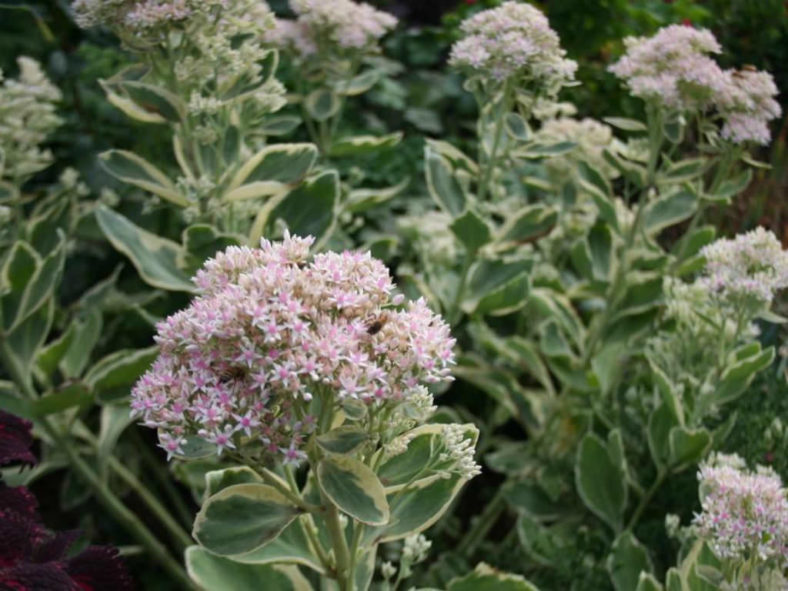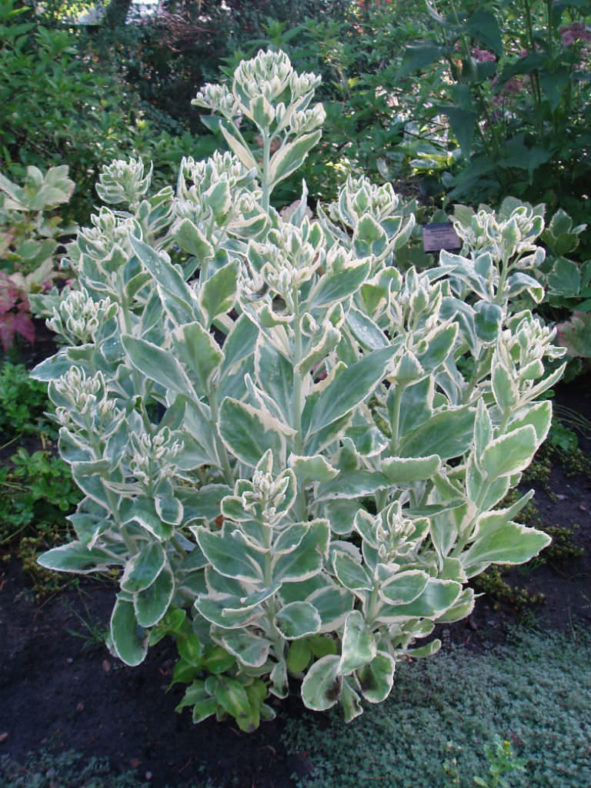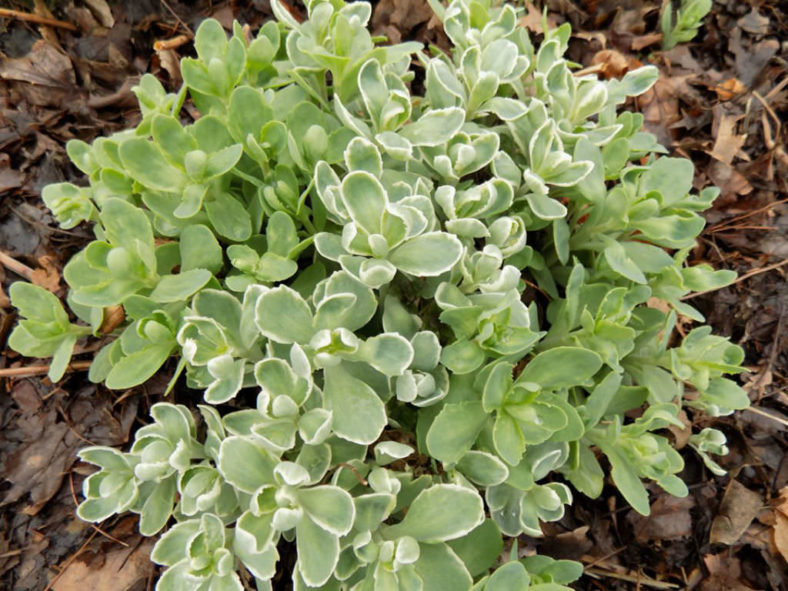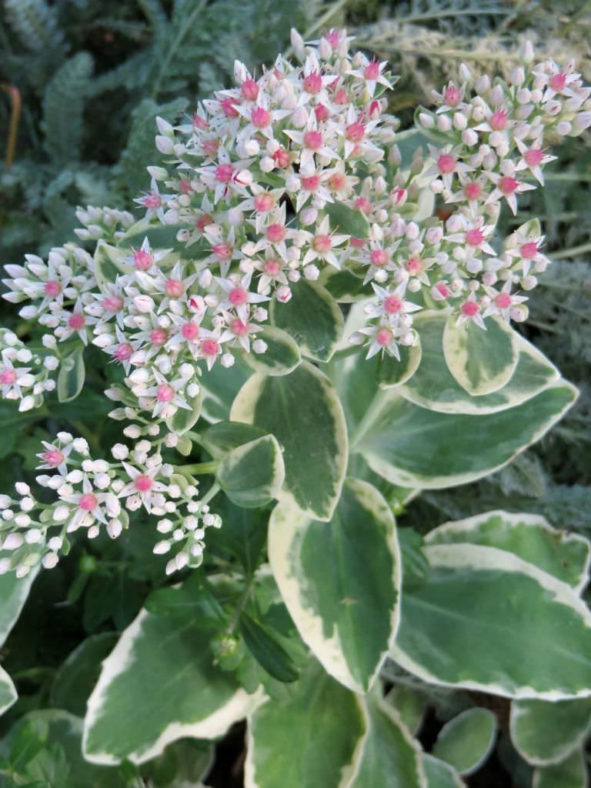Scientific Name
Hylotelephium erythrostictum 'Frosty Morn'
Common Name(s)
Frosty Morn Stonecrop
Synonym(s)
Sedum alboroseum 'Frosty Morn', Sedum erythrostictum 'Frosty Morn', Sedum 'Frosty Morn'
Scientific Classification
Family: Crassulaceae
Subfamily: Sempervivoideae
Tribe: Telephieae
Genus: Hylotelephium
Origin
This variegated cultivar of Hylotelephium erythrostictum was discovered in Japan by the plantsman and plant explorer Barry Yinger. It was given to another well-known plantsman, Tony Avent, who owns Plant Delights Nursery and Juniper Level Botanic Garden, for propagation and sale in the United States.
Description
Hylotelephium erythrostictum 'Frosty Morn', formerly known as Sedum erythrostictum 'Frosty Morn', is a compact, clump-forming succulent with thick, erect stems that bear thick, fleshy, green to gray-green leaves with creamy-white margins. It can grow up to 16 inches (40 cm) tall.
The flowers are small, star-shaped, white to pinkish, and appear in flat clusters from late summer to early fall. When open, they can almost entirely cover the foliage.

How to Grow and Care for Hylotelephium erythrostictum 'Frosty Morn'
Light: This succulent prefers full sun. It tolerates light to partial shade in hot summer climates but will produce weak, floppy growth when grown in too much shade. Plant your H. erythrostictum 'Frosty Morn' in an area of your garden that gets 6 hours of sunlight daily.
Soil: H. erythrostictum 'Frosty Morn' does not need rich soil, but it does need excellent drainage. Choose a commercial potting mix for succulents, or make one yourself.
Hardiness: This plant is cold-hardy and tolerant of heat and drought, making it a popular outdoor succulent. H. erythrostictum 'Frosty Morn' can withstand temperatures as low as -40 to 30 °F (-40 to -1.1 °C), USDA hardiness zones 3a to 9b.
Watering: The best way to water H. erythrostictum 'Frosty Morn' is to use the "soak and dry" method. First, get the soil completely wet, then wait until it is dry before watering again.
Fertilizing: Feed annually with a balanced fertilizer. According to the package directions, apply the fertilizer to the soil in spring as new growth appears.
Repotting: Plants in containers require little more care than those in gardens. Repot your H. erythrostictum 'Frosty Morn' when it outgrows its current pot by moving it to a larger pot to hold the plant better. Spring is the best time to repot this plant. Make sure the soil is dry before you begin the repotting process.
Propagation: This succulent can be grown from seeds, division, or stem cuttings. Sow seeds in spring. Dividing your H. erythrostictum 'Frosty Morn' is easy and can be carried out at almost any time in the growing season, though it is probably best done in spring or early summer. Propagate by stem cuttings in summer.
Learn more at How to Grow and Care for Hylotelephium.
Toxicity of Hylotelephium erythrostictum 'Frosty Morn'
H. erythrostictum 'Frosty Morn' can be mildly toxic to humans and animals.
Links
- Back to genus Hylotelephium
- Succupedia: Browse succulents by Scientific Name, Common Name, Genus, Family, USDA Hardiness Zone, Origin, or cacti by Genus
Photo Gallery
Click on a photo to see a larger version.


